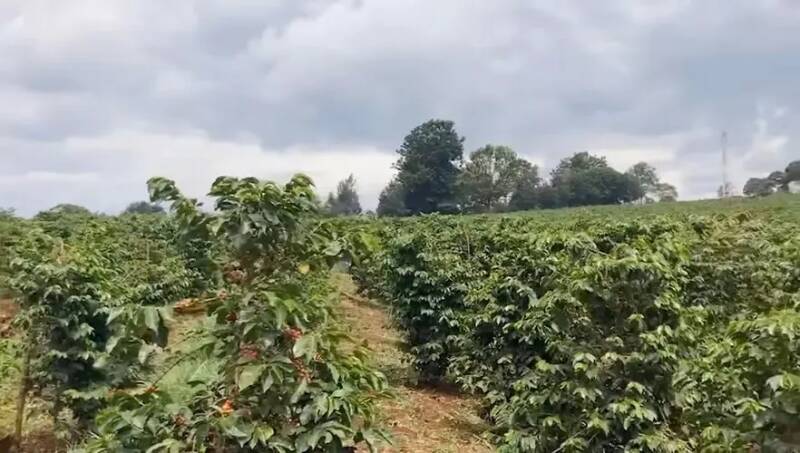Introduction to Neri, the coffee producing area of Kenya, Africa
Africa is a plateau continent with a vast area, known as the "plateau continent", with an average elevation of 750m. Africa has many mountains, volcanoes, lakes and rivers. It crosses the equator, mainly in the tropics, and the annual average temperature is above 20 ℃. Africa, which is rich in natural resources, has developed agriculture, and many countries are famous for producing coffee, such as Ethiopia, Kenya and Tanzania. Kenyan coffee is famous for its multi-level taste and juice-like acidity. It is loved by many people in the coffee industry.

Although Kenya is adjacent to Ethiopia, the birthplace of coffee, the coffee industry in Kenya started relatively late. It was first brought to Kenya by French missionaries in the 19th century, when Kenya was a British colony, where the British controlled local agriculture, including coffee cultivation, and the locals could only do some cheap labor. However, the British saw the benefits of coffee cultivation and vigorously developed the coffee industry. By the end of the 19th century, Kenya had nearly 50 coffee plantations.
In the 20th century, the colonial government and Kenyan indigenous peoples began civil strife, allowing Kenyans to grow their own coffee and depriving European landlords of their property for the first time through land reform, when the distribution plan formed a small farmer model. After that, the government made great efforts to develop the coffee industry, first establishing an auction system in 1934 to increase coffee income, and then drawing up a draft coffee quality grading system to improve planting quality. in the 1950s, an agricultural bill was passed to enable farmers to have the right to use agricultural land, so that farmers can be self-sufficient and increase their income.
Of course, to produce high-quality coffee beans can not be separated from the Kenyan climate and environment. Kenya is located in eastern Africa, which runs through the central part of the equator and the Great Rift Valley of East Africa from north to south. Most of the country is a plateau with an average elevation of 1500 meters. The eastern branch of the East African Rift Valley cuts between the north and south of the plateau, dividing the highland into eastern and western parts, and there are many volcanoes in the territory. Mount Kenya, the extinct volcano in the central highland, is as high as 5199 meters above sea level, making it the second highest mountain in Africa.
Kenya is located in the tropical monsoon region, most areas have a savanna climate, while the coastal areas are hot and humid, while the plateau climate is mild, the annual rainy season is from March to June and October to December, and the annual temperature is between 12 and 24 ℃. Kenya is rich in natural resources, high-altitude mountains, volcanic soil, plenty of sunshine and appropriate rainfall make the country's agriculture and tourism more developed.
Coffee is basically grown in the central and western regions of Kenya, and in the middle there are well-known producing areas such as Nyeri, Kiambu and Kirinyaga, which are all around the extinct volcano Mount Kenya and benefit from fertile volcanic soil, suitable sunshine and rainfall to produce the best quality coffee in Kenya, the best-known producing area in the country is Nyeri.
Nyeri, located in central Kenya, is home to Mount Mount Kenya, the extinct volcano, surrounded by Mount Kenya and Mount Mount Aberdare, surrounded by mountains that pass through the eastern end of the Great Rift Valley, where meltwater from the snow-capped mountains brings pure and cool water. Coffee is grown on a hillside of 1200-2300 meters, with high-altitude mountains, fertile soil from volcanic rocks and rich glacier water resources, which makes it produce high-quality coffee beans and become one of the important coffee-producing areas in Kenya.
Important Notice :
前街咖啡 FrontStreet Coffee has moved to new addredd:
FrontStreet Coffee Address: 315,Donghua East Road,GuangZhou
Tel:020 38364473
- Prev

The bottom is blown through! Is there a quality problem with the Mstand cold extraction pot?
▲ Click to pay attention| Daily Boutique Coffee Culture Magazine Coffee Workshop The unbearable summer heat in the coffee workshop will make people prefer iced coffee. The cold extract that is easy to DIY at home has become the favorite of coffee lovers recently. Mstand, the "surrounding maniac", naturally also noticed fans 'current demand for cold extract, so in early July,
- Next

Vietnam's Khun Thom Province has 32 earthquakes in 24 hours!
According to local media reports in Vietnam, from 0:00 a.m. on the 28th to the morning of the 29th, 11 earthquakes occurred in Gongbo Long County, Khun Song Province, south-central Vietnam. On July 28, 21 earthquakes occurred in the area, and the area suffered 32 earthquakes in just 24 hours. According to Vietnam Regional Institute of Physics
Related
- Being chased out of the rain in front of Starbucks?! Store: Sheltering from rain under umbrellas poses a safety hazard
- The white moonlight has changed?! Lucky launches "Big Winter Pear American"
- Hand-brewed coffee three-stage method, high-sweet and universal brewing method to share! What does the high sweet water level of hand-brewed coffee mean?
- What is the difference between raw, refined and full espresso coffee? How to extract espresso and taste good?
- A complete list of coffee bean names and their meanings! What is Yejia Shefi coffee? Where is Mantelin coffee?
- What grade does Arida Manor Kaduai coffee beans belong to? What treatment is Arida ASD slow anaerobic sun exposure?
- The milk tea cup becomes smaller?! Overlord Tea Girl launches a new "Return to Yunnan" series
- Accused of selling counterfeit and high-priced coffee beans! Well-known boutique coffee brand "Oukelao" bowed and apologized!
- How to make espresso dumplings? Can I eat coffee and glutinous rice balls together?
- Save the unformed and stagnant powder cakes in one second! What is the problem with stagnant water in the powder bowl of the espresso machine?

